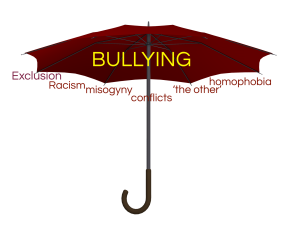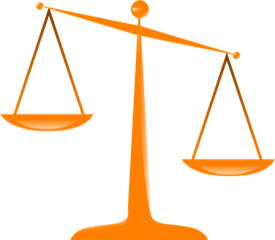How to deal with workplace harassment?
What are the types of workplace harassment?
Canadian Human Rights Commission:
-
makes unwelcome remarks or jokes about your race, religion, sex, age, disability or any other of the grounds of discrimination;
-
threatens or intimidates you because of your race, religion, sex, age, disability or any other of the grounds of discrimination;
-
makes unwelcome physical contact with you, such as touching, patting, or pinching.”
Then there is bullying which is in many forms and a pattern of behaviour. Such as yelling or using profanity, belittling, unwarranted or undeserved punishment, humiliating someone in front of others, changing work deadlines, intentionally not providing guidance, physically abusive, intimidating a person, persistent criticism, overt or covert exclusion, malicious rumours or gossip to name a few.
Defining workplace harassment is a pattern of behaviour that is consistent, taking place in the workplace, where the perpetrator knows or should’ve known would cause harm or offence, with comments that are threatening or intimidating, isolating and cause personal embarrassment. Workplace harassment can be one event that is severe, traumatic enough to cause lasting impact, or a series, a combination of repeated events. This has been my experience of long term repeated harassment.
From my experience under the BULLYING UMBRELLA is destructive.

(exclusion, racism, misogyny, conflicts, homophobia, ‘the other’).
It is awful to be in the shoes of a victim who is dealing with workplace bullying and harassment. The longterm stress and strain are mind-altering, results in depression, illness, career-ending, emotionally traumatic and suicide.
Workplace harassment sucks!! Large corporations, small businesses, local and federal levels of government need to provide a safe, healthy and respectful workplace. Our Governor Generals’ workplace is no exception, this work reflects the attitudes of leadership.
Workplace harassment destroys lives! Not everyone is a good leader. People get promoted into leadership roles and are lousy bullying leaders. Can they learn? Yes if they are willing to recognize these problems and improve interpersonal skills.
Speaking from experience there’s nothing worse than going to work every day in an environment where you are working in fear. The damage to the lives and careers is devastating. People work with the dilemma of speaking up (increased violence)or silence. (further emotional damage)
Bullying and harassment wear people down slowly. The victim, the bystander, and the organization itself all suffer. Rebuilding that sense of trust takes time and EFFORT.
“Sources say many staffers have fled what they call an atmosphere of ‘bullying and harassment at its worst'”
Quite often it’s a slow decline, chip away at our self-esteem and a downward spiral into depression and other physical and mental health issues.
I talk about the importance of documentation in my TEDx talk 2015. It is the power of the pen in document, document, document. Dates, times, places, who said what where, when and names of any witnesses.
These are the notes that you use or could use if you chose to file a grievance or proceed through the courts. It’s really important to be as accurate as possible in documenting your notes.
Reporting workplace harassment is an individual choice. However I encourage people to speak up, this is where change is created, this is where empowerment is started. Having documented the different workplace harassment and bullying events, this is how you proceed and the evidence you use in filing a complaint/or grievance.
Yes, it is scary to speak up. Not saying anything destroys victims slowly. The silence of by-standers adds to the humiliation and isolation of victims. No one wants to be a target.
Doing nothing, saying nothing, nothing changes and there are more victims, more suffering. In many business organizations, there are Human Resource departments, Unions, Member Assistant programs to report workplace harassment/bullying and seek the needed support and mediation, accountability for perpetrators. However, it’s been my experience that sadly, these very institutions have often failed the victims. This is where Canadian Labour laws, the (CHRC)Canadian Human Rights Commission, federal lawsuits, class action lawsuits, and other recourse are needed for victims to be heard.
The impact of bullying and harassment does not stop at the parking lot and when you leave the building. No, it ripples in all aspects of the victim’s life. Their relationships, their self-esteem, inability to relax on days off, and holidays. Your mind is always thinking about what is going to happen when you return to work. I look at pictures of my daughters birthday, I am in the picture yet have no memory. All my energy at that moment was focused on what was happening at work, was there going to be further abuse when I returned to the next day.
People make mistakes under that kind of constant pressure.

“The sources say Payette has yelled at, belittled and publicly humiliated employees. They accuse her of throwing tantrums in the office and, on one occasion, tossing an employee’s work aside and calling it “shit.”
On a single day, multiple people were seen leaving Payette’s office with tears in their eyes after private meetings with the Governor General, said one source. In another instance, a staff member was spotted crying in their car.
“She screams and humiliates staff in front of others,” said a former employee. “It’s verbal abuse. In no world is it OK to treat people that way.” “
Everyone deserves to feel safe in the workplace. Getting up and driving to work need not be terrifying, fearful and one of dread of your boss and co-workers. The only yelling and screaming are someone in the office won the lottery or the building is on fire.
Leadership and creating a healthy workplace is about understanding we don’t have to like everybody, but we do have to be respectful and get along.
How do you create a respectful workplace? It takes EFFORT!
First, recognize there is a problem. Doing nothing saying nothing, nothing changes, the workplace becomes a toxic workplace, productivity drops, damage to business reputation and profits, and we have more victims struggling with mental health.
Leadership/management is important to set the boundaries and example of how the workplace culture is going to be for the organization. We are not born with perfect skills to handle conflicts and difficult conversations. We can relearn. It is a choice.
It is the responsibility of management, leadership and everyone in the workplace to create a healthy and respectful workspace.
Those in leadership roles need to create policies and procedures on the definition of a respectful workplace in their own business. By following the Labour laws, work health and safety, CHRC each business knows what defines a violent free workplace.
Leaders must implement and follow these policies and procedures where everybody knows the rules, the boundaries, the consequences and the resources to proceed with grievances dealing with workplace harassment and bullying.
Management has to have a willingness to deal with complaints, grievances as and conflicts immediately and not allow bullying and harassment to continue.
People need to learn effective communication and listening skills, have a willingness to enforce respectful workplace policies, believe in collaboration, team building, compassion (we all make mistakes), understanding the importance of immediately addressing and engaging in conflict resolution and other complaints from staff.
A power imbalance real or perceived creates fear and intimidation in speaking up about bullying and harassment. Changing that perception takes time, patience and creative thinking by leadership

Have training in recognizing we all have our leadership styles and we want to be managed. It’s not a one size fits all. Leadership has to be curious and creative in understanding the needs of different employees.
Can we prevent workplace bullying and harassment? Yes and no.
We cannot change people, the only people we can change is ourselves. What we can do is create a workplace that discourages bullying and harassment. Create a workplace that encourages respect, inclusion, collaboration, curiosity, hire folks with these qualities, adopt a ‘no asshole/bullying’ policy and a willingness to enforce these policies.
It’s important to remember that it only takes one person to ruin a workplace if there’s ineffectual leadership in dealing with harassment and bullying.
Education, ongoing training, counselling those who are dealing with workplace your ass when I’m bullying and also those who are the perpetrators. We can learn from each other and there are choices each of us can make and how we want to behave in the workplace. We don’t have to like everybody but we do have to be respectful.
Encouraging all employees to have a work-life balance, their self-care tool kit for good mental health. We cannot change people, we can change our attitude and how we react, respond, and what we retain. Everyone needs tools to survive for both a healthy workplace and a bullying/harassment workplace. It is called self-care tools and strategies.
Add Bystander training that explains the importance of saying something/speaking up for victims, cultural understanding, and historical trauma, we never know where our employees have come from and their life experiences. This can build bridges of understanding. No one likes conflict and difficult conversations yet if we say nothing then we suffer and others suffer, nothing changes. We may quit but remain with the emotional trauma of bullying and harassment.
“This has gone from being one of the most collegial and enjoyable work environments for many of the staff to being a house of horrors,” said one government source. “It’s bullying and harassment at its worst.”
Working under the threat of bullying and harassment is neither productive nor healthy. The long-term damage can be traumatic and life-changing for some victims. They need support and the tools to rebuild. Those who continue to believe in that bullying mindset have the opportunity to learn or leave. A healthy respectful workplace is everyone’s responsibility.
We all make mistakes! there is a difference between a mistake and bullying/harassment. It is in the intent. None of us is perfect. The idea is to not repeat patterns of behaviour that is offensive/humiliates. At some point most of us have said the wrong thing, laughed at an inappropriate joke, done the wrong thing and hurt someone’s feelings. The idea is to learn from these lessons and not repeat them. The difference between bullying and harassment is in the intent. a mistake is just that a mistake not to be repeated. For those who bully and harass the intent is to wound, to have power, hurt and destroyed. Leaders and bullies are two things we choose to be in life and the workplace.

